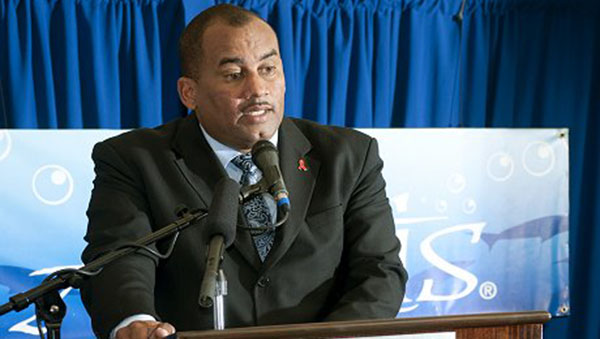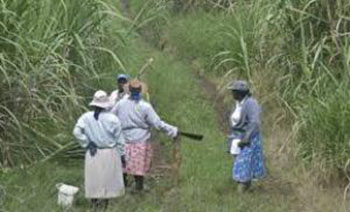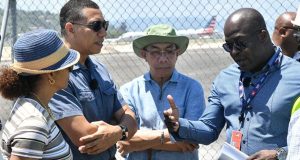By Marie Claire Williams
CMC Feature Writer
BRIDGETOWN, Barbados, November 13, 2017 (CMC) – For more than three centuries, the Barbados economy relied heavily on sugar and rum production. However, by the 1990 and with the decline of sugar exports, the tourism sector has emerged as the island’s main income earner.
The Central Bank of Barbados (CBB) in August reported that sugar production for the first six months of this year was a mere 10,000 tonnes. Rum exports, however, earned BDS$76.9 million in 2016.
Now, as tourism officials seek to diversify the tourism product and improve the island’s competitiveness on the global stage, they have turned their attention to heritage tourism, with a focus on the sugar and rum industries.
Latest figures released by the CBB note that the tourism sector played a significant role in the island’s economic growth of 1.4 percent during the first nine months of this year.
But it said tourism output, which fuelled the stronger growth performance over the first half of the year, fell during the third quarter, due to a reduction in the average length-of-stay of visitors and hurricane-related disruptions to tourist arrivals in September.
“The improved tourism performance for the first nine months of the year enabled the external current account to stabilise.,” it said, adding that the activity in the tourism sector expanded by 4.1 percent during the first three quarters of the year, compared to 2.8 percent growth for the corresponding period in 2016.
While September arrivals fell by 3.3 percent, data for the January to September period of 2017 showed a cumulative growth in long-stay visitors of 6.2 percent, relative to the same period in 2016. Arrivals from the U.S. and Canada remained robust, expanding by 14.4 and 10.7 percent, respectively, but the performance of the U.K. market was on par with 2016.
Cruise passenger arrivals for the first nine months of the year rose by 17.6 percent. However, the performance of the industry was tempered by a 21.3 percent decline in arrivals during the third quarter, due to a falloff in cruise calls as cruise lines adjusted their September itineraries, following the impact of unfavourable weather conditions.
The Barbados Tourism Product Authority (BTPA) says it will host the 2018 Sugar and Rum season from January 15-April 15, to highlight various aspects of production in both industries and, at the launch of the event on Monday, BTPA Chief Executive Officer, Dr Kerry Hall, recalled the time “when sugar was king and rum was queen”.
“By the end of the 1600s, Barbados was said to be the richest of all the European colonies in the Caribbean region, and the brightest jewel in the British crown. This wealth was made possible through the sugar industry, which was built on the backs of the enslaved workers,” Hall said, adding that it is important that the story of sugar and rum is told to both locals and visitors alike.
“We insist that we must tell the story of Barbados to the world. It is a fascinating, rich and compelling story that we believe the world will be interested in hearing. And a large part of this story is the rich history of sugar and rum.
Local historian, Professor Karl Watson, recalled how sugar and rum production began in Barbados.
“The sugar economy, as we know it in the Caribbean, started on this island. And like a shifting frontier, it went further and further north: Jamaica, St. Domingue… so this island, and this is something that I am proud of, what my ancestors did, they created a worldwide industry,” Watson said.
He also acknowledged the dark side of sugar and rum production, most notably the use of African slave labour for the cultivation of sugar cane when the early settlers realised that labourers from England and Ireland could not survive the tropical climate.
“They couldn’t stand the hard work, they couldn’t stand the bad food, they couldn’t stand the ill-treatment. And then the price of indentured servants went up in England, and so they said where is a marketplace for human labour. And so they shifted their attention to West Africa. And that’s when thousands and thousands of Africans were brought to this island to labour in the sugar cane fields.”
Tourism Minister, Richard Sealy, said the importance of sharing the island’s heritage with visitors could not be overstated.
“It is a fact that our visitors want to be immersed in our cultural experiences, and if you’re going to come to Barbados, and you want to be a part of our cultural experience, how better to do it, in deed, than to experience the story of sugar?” Sealy asked, praising the private sector, here, for its continued investment in the rum industry.
“Of course the St. Nicholas Abbey experiment is one that comes to mind right away, and I think the Warren family should be saluted for what they’ve done there, and I think apart from taking one of the few Jacobean mansions in the western Hemisphere and making it something truly attractive, they’ve actually created a brand of rum around that whole plantation,” Sealy noted.
Barbados counts St. Nicholas Abbey among its three main distilleries. And with the decline of the sugar industry, only one factory remains operational: Portvale Sugar Factory, west of here.
The 2018 sugar and rum season will include rum distillery tours and historic lectures.
 Pride News Canada's Leader In African Canadian & Caribbean News, Views & Lifestyle
Pride News Canada's Leader In African Canadian & Caribbean News, Views & Lifestyle






